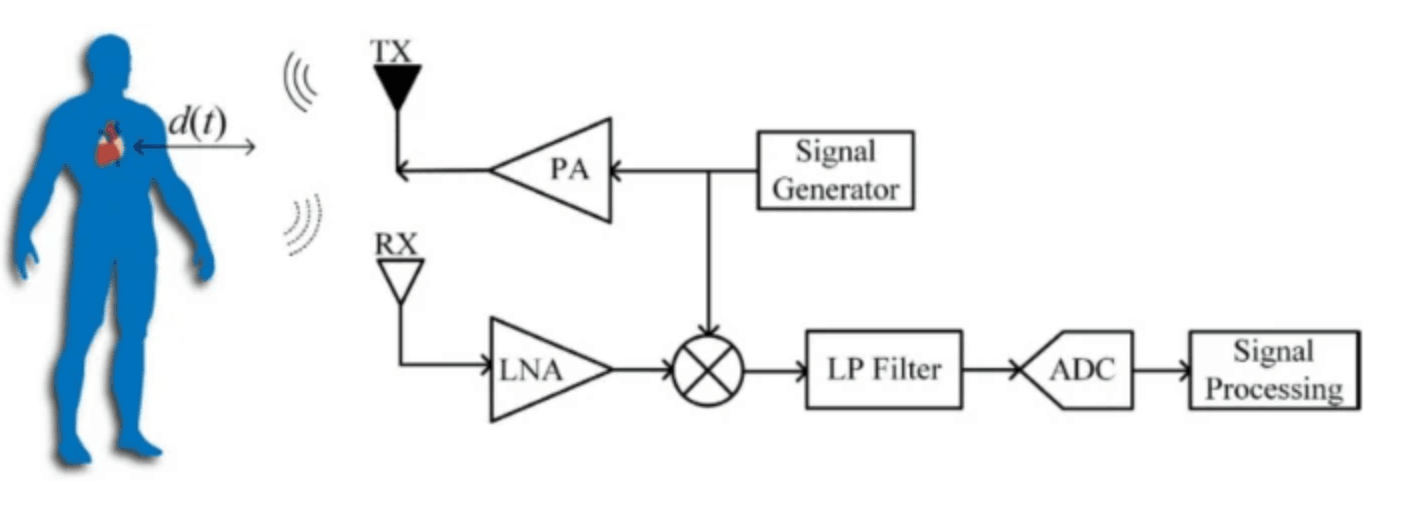Author: Linpowave Technology Team | Published: October 2025
Abstract
Non-contact monitoring of vital signs is becoming increasingly important in healthcare, home health management, and smart furniture. A study in Nature Scientific Reports (2024) showed that millimeter-wave (mmWave) radar combined with the DR-MUSIC algorithm can measure heart rate with an error under 3% and respiration rate with an error under 4%. This article examines those findings and explores how Linpowave’s technology can apply mmWave radar in practical settings. It also offers guidance on implementation, optimization, and real-world use for hospitals, homes, and smart furniture solutions.
Introduction
The need for precise, non-contact monitoring is growing as the population ages and chronic diseases become more common. Devices that require contact, such as ECG patches or wrist-worn monitors, may cause discomfort, low compliance, and carry infection risks. Optical and infrared sensors avoid contact but often struggle in dim lighting, shadows, or when clothing blocks the body.
Millimeter-wave radar detects micro-movements of the chest caused by heartbeat and breathing. The study in Nature Scientific Reports confirmed that combining DR-MUSIC algorithms with median filtering allows reliable measurements across different body types and environments. Linpowave builds on this work, offering practical ways to apply mmWave radar in real settings while maintaining accuracy and reliability.
Technical Principles
Signal Detection
Millimeter-wave radar works by emitting continuous, frequency-modulated waves and capturing the reflected signals from small chest movements. These reflections produce frequency shifts that indicate heartbeat and breathing patterns. Unlike optical sensors, mmWave radar is not affected by light and can penetrate light clothing or bedding.
Data Processing and Optimization
The Nature study found that DR-MUSIC combined with median filtering delivers precise vital signs measurements. Linpowave has refined this approach to suit real-world conditions:
-
Antenna arrays are designed to improve directional resolution, which helps distinguish multiple people in the same area.
-
Real-time filtering removes environmental noise to extract small movements accurately.
-
Algorithms separate signals from different individuals, even when slight movements occur.
-
Dynamic adjustment of algorithm parameters allows the system to adapt to different postures, body sizes, and distances.
These improvements make the technology usable in hospitals, homes, or furniture-embedded systems.
Validation of Accuracy
Experiments at distances between 0.5 and 3 meters show that heart rate errors range from 1.7% to 2.6%, while respiration rate errors stay below 4%. Clothing and light conditions had minimal effect on measurements. Linpowave’s enhancements aim to maintain similar accuracy outside laboratory conditions.
Data Visualization and Alerts
Collected data can be displayed visually, and algorithms can detect anomalies. For example, sudden changes in breathing or heart rate trigger alerts. Trends in heart rate variations may help caregivers or family members detect potential health risks early.
Applications
Hospital Remote Monitoring
Installing mmWave radar above patient beds or in corners allows continuous non-contact monitoring. This reduces infection risk and lightens the workload of nursing staff. In ICU settings, multi-target algorithms can track multiple patients simultaneously. Real-time visual alerts notify staff when abnormal patterns are detected.
Home Health Monitoring
Radar sensors embedded in beds, sofas, or furniture enable 24/7 monitoring without wearable devices. This is especially useful for elderly people or those with chronic conditions. Systems can be connected to mobile apps to notify family members if heart rate or breathing falls outside normal ranges.
Smart Furniture and Workplace Integration
Embedding radar in chairs or office furniture allows monitoring of subtle chest movements. Such data can inform fatigue tracking, breathing patterns, and heart rate changes. Visualization and simple AI analysis can give personalized guidance, such as reminders to rest or adjust posture.
Challenges and Strategies
| Challenge | Optimization | Recommendation |
|---|---|---|
| Signal interference | Improve antenna arrays, optimize multi-target algorithms | Configure radar placement or use multiple antennas to reduce interference in shared spaces |
| Weak signals | DR-MUSIC + median filtering | Adjust algorithm parameters based on posture or body size for reliable detection |
| Privacy | Local processing + encryption | Use edge computing to store and analyze data locally, reducing cloud exposure |
| Environment | Antenna and algorithm optimization | Ensure stable monitoring in low-light or night conditions for real-world deployment |
FAQ
Q1: What vital signs can mmWave radar monitor?
A1: Heart rate and breathing rate are core indicators. Advanced analysis can include breathing depth and heart rate variability.
Q2: Can it monitor through clothing or bedding?
A2: Yes, mmWave signals can penetrate light clothing and blankets for accurate non-contact monitoring.
Q3: Can multiple people be monitored at the same time?
A3: Yes, with multi-target algorithms and proper antenna placement. Complex settings may require additional tuning.
Q4: How can home users implement this technology?
A4: Install radar sensors in beds, sofas, or furniture. Alerts can notify caregivers or family members of abnormal readings.
Q5: Is mmWave radar safe?
A5: It uses low-power electromagnetic waves that meet international safety standards and is harmless to humans.
Q6: Does real-world accuracy match experiments?
A6: Laboratory results showed heart rate errors under 3% and respiration rate errors under 4%. Linpowave optimizations bring practical deployments close to these levels.
Conclusion
Millimeter-wave radar offers precise, non-contact, real-time monitoring that works across diverse environments. Experiments in Nature Scientific Reports confirm its effectiveness. With Linpowave technology, mmWave radar can be used in hospitals, homes, and smart furniture, providing reliable, actionable health data. Careful antenna design, algorithm refinement, and placement strategies allow practical deployment while maintaining accuracy and responsiveness.
References
-
Nature Scientific Reports. "A high precision vital signs detection method based on millimeter wave radar." 2024; https://www.nature.com/articles/s41598-024-77683-1
-
Linpowave Products & Solutions: https://linpowave.com/solutions
-
Wang, Y., et al. "Non-contact vital sign detection using millimeter-wave radar." IEEE Sensors Journal, 2023



